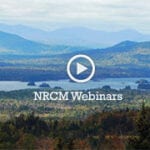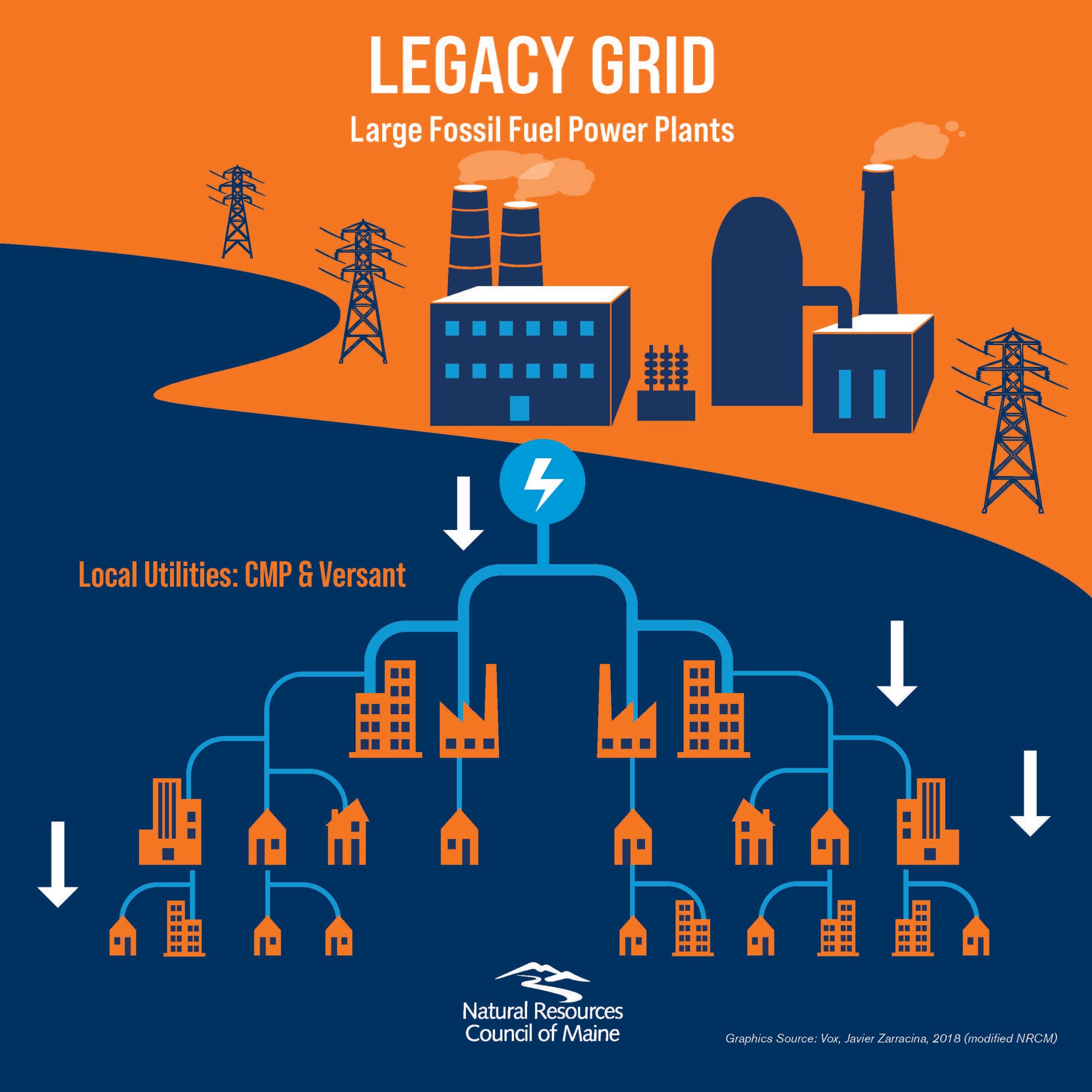Climate change is one of the greatest threats facing Maine’s woods, waters, wildlife, and communities. To stay strong and well prepared for the future, we need to continue building home-grown clean energy sources to power our homes, cars, and businesses.
A successful clean energy transition will deploy hundreds of thousands of heat pumps, zero-emission vehicles, and large amounts of wind, solar, and battery energy storage. To connect and use these technologies affordably and efficiently, we need a modern, dynamic electric grid that can closely match electricity demand with supply to maximize the benefit for Maine people.
Outdated Electric Grid Not Prepared for Future Growth
For more than a hundred years, we’ve built large power plants, turning them up and down to meet demand. This simple, one-way system served well enough in an era of large, mostly fossil fuel-powered generators with little growth in demand, but this is not the future we’re looking at.
Our legacy industry and regulatory frameworks impose barriers to progress for modernizing the electric grid. Today, utilities are financially rewarded by maximizing capital expenditures. They have limited incentives to improve access to the grid, enable third-party innovation, increase transparency, or help achieve Maine’s greenhouse gas reduction targets.
A Modern Electric Grid for Maine’s Clean Energy Future
Shifting from a top-down model to a bottom-up, participatory architecture will require a wholesale re-envisioning of how we plan, build, and operate the grid to unlock the full promise of clean, affordable energy for Maine communities and businesses.
Instead of sending electricity in one direction, we need a grid that can flexibly balance supply and demand, dynamically responding throughout the day across different parts of the grid. For example, rates can be designed to reward customers to use electricity when there is excess capacity on the grid, or new buildings can be installed with technology to automatically respond to grid constraints, thereby avoiding expensive infrastructure upgrades.
The Pathway to an Equitable Clean Energy Grid
New regulatory frameworks are needed to achieve grid modernization.
- Rewarding utilities for performance instead of capital spending is a potentially promising approach, if properly designed and The Maine Legislature will consider a bill on Performance Based Regulation (PBR) in 2024.
- Separating distribution grid operations from asset ownership could help us evolve the grid into an open-access platform that can serve high levels of distributed energy resources and enable the dynamic flexibility we need to do so cost-effectively. LD 952, passed in 2023, starts the process of studying what this model, known as a Distribution System Operator, would look like here in Maine.
- New integrated grid planning requirements, like those established in 2022 by LD 1959, can help us ensure that utility investment and operational decisions are putting us on track for a clean energy future consistent with the state’s Climate Action Plan.
- Strong protections and expanded access for low-income and other underserved populations will be necessary to make sure that the transition benefits Mainers in every corner of the state.
Transforming the existing electric grid into the dynamic, flexible, and affordable grid we need for our clean energy future is a massive undertaking, but if we are successful, we can address climate change, enable a vibrant and participatory power sector, and save Maine people and businesses money as we transition to an energy system powered by clean, renewable energy.
—by Rebecca Schultz, NRCM Climate & Clean Energy Senior Advocate












What is being done to have in place the necessary grid connection to the soon off-shore windfarm in the Gulf of Maine?
As of right now, offshore wind developers are responsible for interconnecting their projects, that is, selecting the interconnection point, and building the necessary infrastructure, which gets rolled into the overall project cost. This approach has its downsides, which is why we are advocating for a shared and planned regional approach to offshore wind transmission and interconnection. The shared/planned approach could maximize the usage of existing interconnection points, lower costs by spreading the expense of new infrastructure across multiple projects, ensure community benefits for localities where cables might come ashore, and lessen any ecosystem or community impacts or project risk from laying cables or local objections. We included a transmission section speaking to this in LD 1895, the offshore wind bill passed in 2023, and are advocating for this strategy to be explicitly included in the next round of Maine’s climate action plan, due in 2024, as well as advocating directly with the state government and working with our regional partners who share this goal.